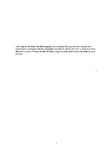Importance of seagrass beds as a habitat for fishery species around Jersey
| dc.contributor.author | Jackson, Emma Louise | |
| dc.contributor.other | Faculty of Science and Engineering | en_US |
| dc.date.accessioned | 2011-06-28T15:27:04Z | |
| dc.date.available | 2011-06-28T15:27:04Z | |
| dc.date.issued | 2003 | |
| dc.identifier | Not available | en_US |
| dc.identifier.uri | http://hdl.handle.net/10026.1/521 | |
| dc.description.abstract |
Worldwide, seagrass habitats have been identified as important nursery areas, refugia and feeding grounds for many faunal species, including those of commercial and recreational value. Their importance as both permanent and temporary habitats has been recognised in UK fisheries management and conservation strategies; however, it must be emphasised that current knowledge of the roles of seagrass habitats originates mostly fromm research carried out outside the UK. Also, the subtidal distribution of Zostera around the British Isles has not been rigorously quantified at many locations. Local studies are essential for providing the relevant information required by fishery agencies to make valued judgements of the importance of seagrass beds. This study reports the spatial and small-scale temporal utilisation of previously unsampled and unmapped subtidal seagrass {Zostera marina) beds by large mobile fauna in the coastal waters of Jersey, English Channel (49°00N 02°00W). The focus was on the value of the seagrass beds as a habitat for exploited species. | |
| dc.language.iso | en | en_US |
| dc.publisher | University of Plymouth | en_US |
| dc.title | Importance of seagrass beds as a habitat for fishery species around Jersey | en_US |
| dc.type | Thesis | |
| dc.identifier.doi | http://dx.doi.org/10.24382/3262 |
Files in this item
This item appears in the following Collection(s)
-
01 Research Theses Main Collection
Research Theses Main


